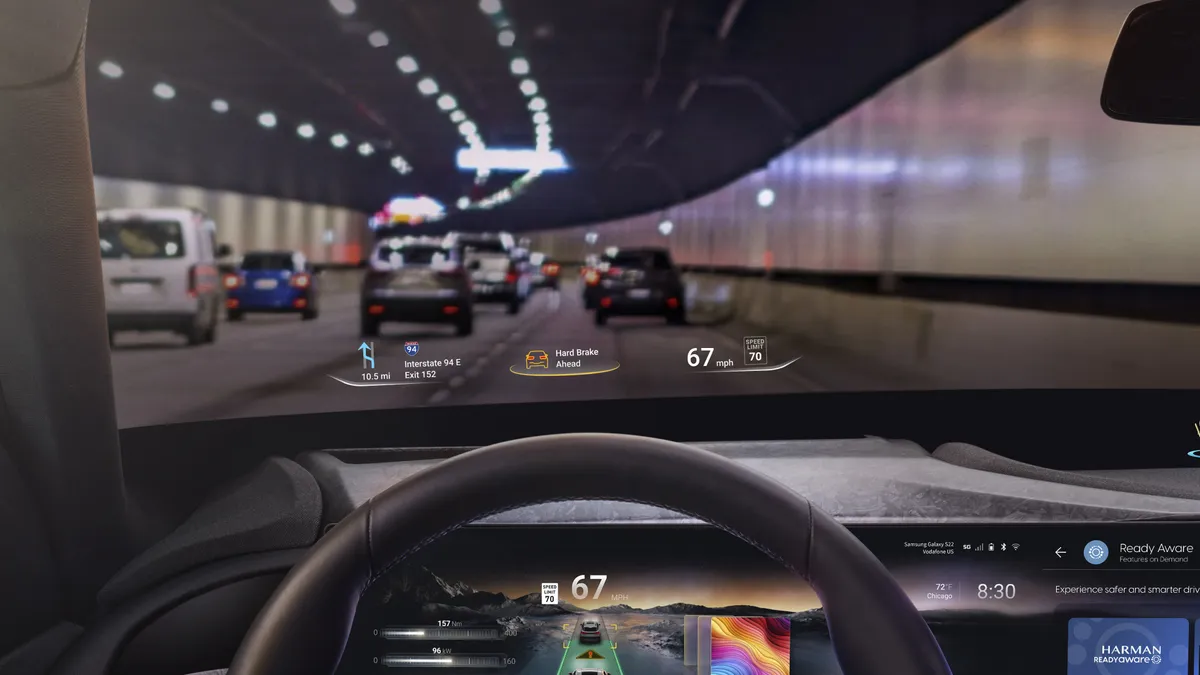Harman, a Samsung subsidiary known for its automotive tech, has revealed new details about Ready Aware, a cloud-powered software platform designed to deliver contextual driving alerts in real time—without relying on manual user input or expensive new hardware.
Unveiled in more depth during Harman Explore in Munich following its initial preview at Mobile World Congress in Barcelona, the Ready Aware platform leverages connected car technology, modern sensor suites, and cloud analytics to warn drivers about hazards they may not yet see. It’s being pitched as an automated, software-only solution that could provide Waze-style situational awareness—but without the need for human crowdsourcing.
At its core, Ready Aware is a Software-as-a-Service (SaaS) model that integrates with existing vehicle sensors and connectivity systems (4G or 5G), feeding real-time data into Harman’s cloud-based analytics engine. This system uses machine learning and “digital twins”—virtual models of real-world conditions—to analyze and validate road events, assigning each one a “confidence score” based on data corroboration from nearby connected vehicles or infrastructure.

The alerts themselves fall into two categories: event-based and feed-based. Event-based notifications include time-sensitive situations such as hard braking ahead, erratic vehicle movement, sudden changes in speed limits, or emergency hazard activations. Feed-based alerts, on the other hand, cover more ambient conditions like poor weather, construction zones, or faulty traffic lights.
What sets Ready Aware apart from apps like Waze or Google Maps is the absence of user-generated input. Drivers don’t need to log anything or confirm alerts manually. Instead, the system passively processes real-time data to provide relevant warnings directly to the driver’s infotainment system. Harman says this creates a safer and more reliable experience, reducing distraction and improving trust in the information provided.
For automakers, the appeal lies in the ease of integration. Ready Aware can run on both Android and Linux-based infotainment platforms and can be deployed via over-the-air (OTA) updates to compatible vehicles. As long as a vehicle has a suitable sensor suite—such as cameras or radar—and a working data connection, it can become Ready Aware–enabled without new hardware installations.

Harman claims that over 50 million vehicles already on the road are equipped with its connected technologies, many of which are capable of supporting Ready Aware with minimal updates. This positions the platform as an attractive off-the-shelf solution for manufacturers seeking to meet new safety expectations without undergoing lengthy development cycles.
Although no official timeline has been provided for its rollout in production vehicles, Harman says the system is ready for deployment. The technology may also benefit from increasing regulatory pressure: organizations like EuroNCAP are actively incentivizing features that enhance active safety, making systems like Ready Aware more compelling to automakers looking to improve safety scores.
In a related move, Harman also announced the open-sourcing of its Eclipse Connected Services Platform (ECSP), which it says is the first full connected services platform of its kind. The goal is to promote interoperability between vehicle brands and accelerate the development of future-ready, connected vehicles.





